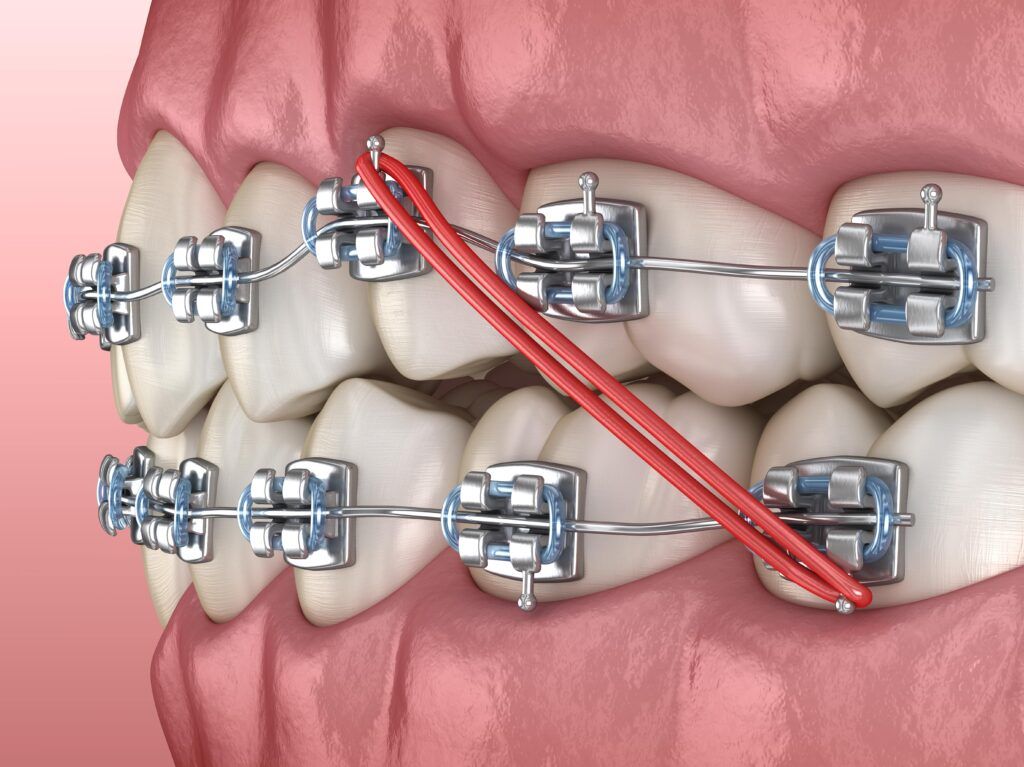What Establishes Cumming Braces and Aligners In Addition To Various Other Orthodontic Treatments
What Establishes Cumming Braces and Aligners In Addition To Various Other Orthodontic Treatments
Blog Article
Comprehensive Guide to Orthodontics Procedures for Remedying Oral Misalignments
In the realm of orthodontics, the trip to attaining a perfectly lined up smile includes a myriad of treatments customized to correct dental misalignments. From standard dental braces to invisible aligners and even surgical options, the field of orthodontics supplies a series of solutions to attend to differing degrees of oral abnormalities. Understanding the ins and outs of each procedure, including their devices, benefits, and potential disadvantages, is crucial in making informed decisions about one's orthodontic treatment. As we navigate through the extensive guide to orthodontic procedures for fixing dental misalignments, the intricate details of each technique will unfold, clarifying the path toward a useful and unified oral positioning.
Orthodontic Procedures Summary

Along with clear aligners and typical braces, orthodontists might also advise other treatments like headwear, palatal expanders, or retainers to deal with details alignment concerns (cumming orthodontist). These procedures are tailored to every patient's distinct demands and may include a mix of therapies to achieve the preferred outcomes. Normal adjustments and tracking are critical parts of orthodontic treatment to make certain progress is on track and to make any type of needed modifications along the road. By going through orthodontic treatments, people can not only achieve a straighter smile however additionally boost their overall oral health and function.
Traditional Dental Braces: Just How They Function
When considering orthodontic treatments for oral misalignments, conventional dental braces stand out as a time-tested technique for correcting teeth positioning. Standard dental braces consist of brackets, cables, and bands that function together to apply constant stress on the teeth, gradually moving them right into the wanted alignment.
One secret element of just how traditional braces work is the procedure of bone remodeling. As pressure is related to the teeth with the dental braces, the bone bordering the teeth is improved to sustain the new tooth positions. This improvement is crucial for the long-term stability of the fixed positioning. Individuals will certainly require normal adjustments at the orthodontist's office to ensure the braces continue to apply the appropriate pressure for efficient teeth motion.
Undetectable Aligners: Pros and Disadvantages
Invisible aligners use a hassle-free and very discreet option to typical dental braces for remedying dental imbalances. These clear, custom-made trays are virtually invisible when put on, making them an enticing choice for individuals seeking an extra cosmetically pleasing orthodontic treatment. One of the key benefits of unnoticeable aligners is their removability, permitting easier upkeep of dental health compared to typical dental braces. Clients can remove the aligners prior to eating or cleaning their teeth, minimizing the risk of food obtaining stuck in the appliance and streamlining the cleaning procedure.

Surgical Orthodontic Options
Surgical treatments in orthodontics existing sensible alternatives for resolving intricate oral imbalances that might not be successfully solved with traditional orthodontic treatments. While unseen aligners and typical dental braces can remedy lots of orthodontic problems, certain instances call for medical intervention to achieve optimum outcomes. Surgical orthodontic choices are generally recommended for extreme malocclusions, substantial jaw inconsistencies, and cases where the underlying bone structure requires adjustment to achieve correct positioning.
One typical medical orthodontic treatment is orthognathic surgery, which entails rearranging the jaws to fix useful problems such as difficulty eating or speaking. This surgical procedure is usually done in collaboration with an orthodontist that helps straighten the teeth before and after the treatment. Surgical orthodontics may additionally include treatments to subject influenced teeth, eliminate excess periodontal tissue, or improve the jawbone to create an extra harmonious face account.
Before taking into consideration surgical orthodontic alternatives, clients undertake an extensive analysis to identify the need and potential advantages of such treatments. orthodontics. While surgical treatment might seem complicated, it can considerably late night dentist enhance both the feature and aesthetic appeals of the smile in instances where conventional orthodontic treatments fail
Retainers and Post-Treatment Treatment

Post-treatment treatment involves complying with the orthodontist's directions faithfully. This might include appropriate dental health techniques, attending follow-up appointments, and using the retainers as recommended. Failing to abide by post-treatment treatment guidelines can cause regression, where the teeth progressively move back towards their original positions. Consistent retainer wear, good oral hygiene, and regular dental check-ups are important for preserving the results accomplished through orthodontic surgical treatment and guaranteeing the long-lasting stability of the fixed dental alignment.
Final Thought
In conclusion, orthodontic treatments offer numerous choices for remedying oral imbalances. Surgical orthodontic choices are readily available for much more serious misalignments. On the whole, orthodontic procedures can properly enhance oral health and aesthetic look.
As we navigate with the thorough guide to orthodontic treatments for dealing with dental imbalances, the detailed details of Going Here each technique will certainly unfold, shedding light on the course towards a practical and unified dental positioning. - aligners
One of the most typical orthodontic therapies is the usage of braces, which consist of metal braces and cables that apply gentle pressure to slowly change teeth right into the desired position.When thinking about orthodontic therapies for oral imbalances, typical braces stand out as a time-tested method for fixing teeth placing. Furthermore, unseen aligners might not be ideal for intricate orthodontic webpage issues that require more significant teeth movement, as they are generally suggested for moderate to moderate cases. Retainers are custom-made orthodontic devices developed to hold teeth in their fixed positions after the completion of orthodontic treatment.
Report this page